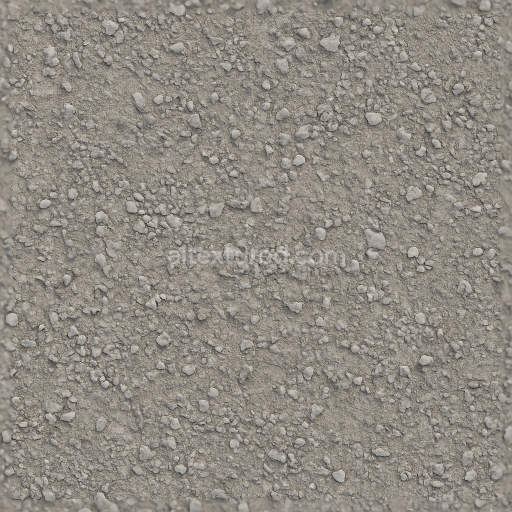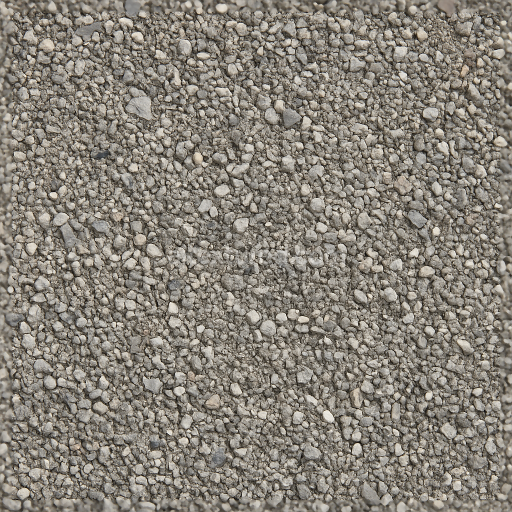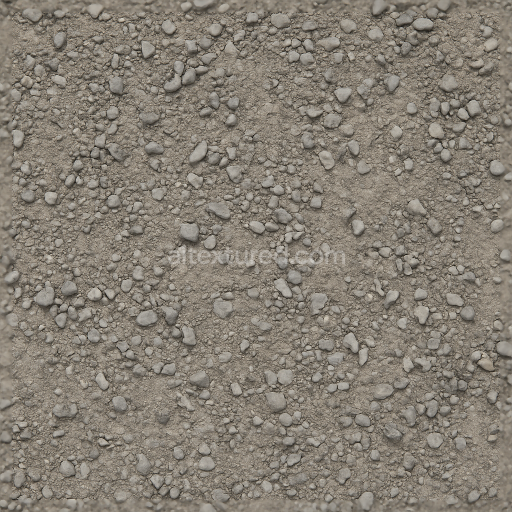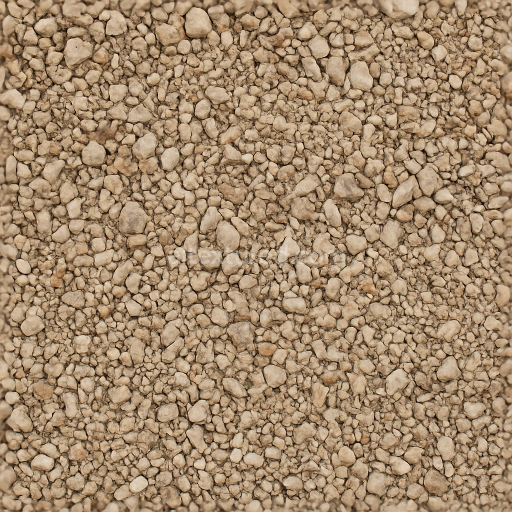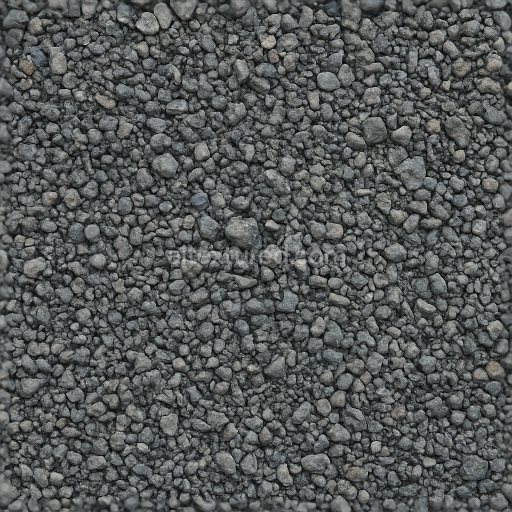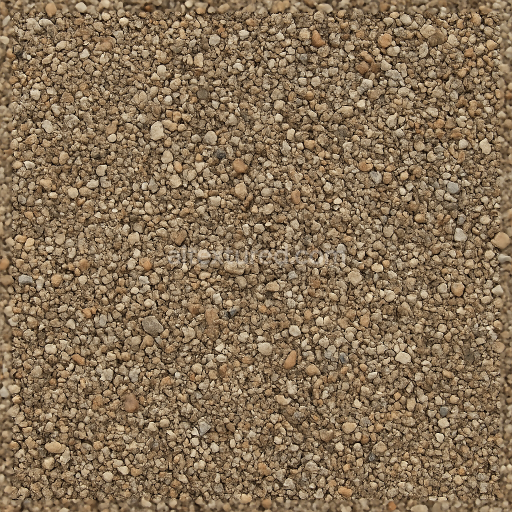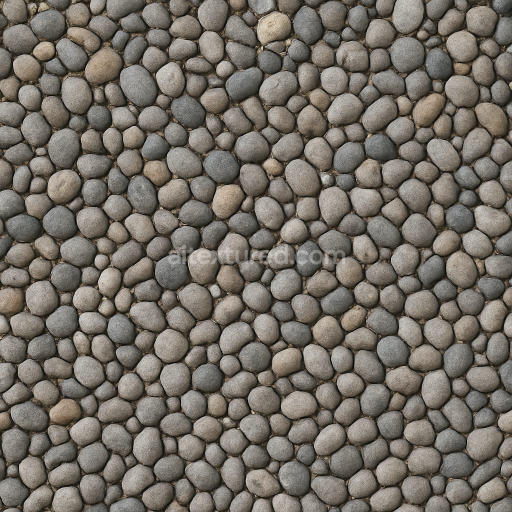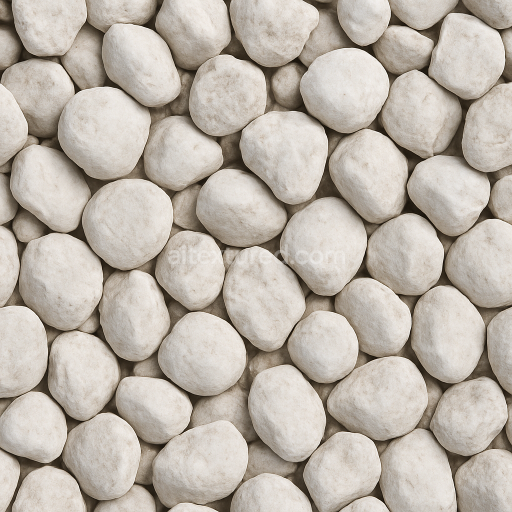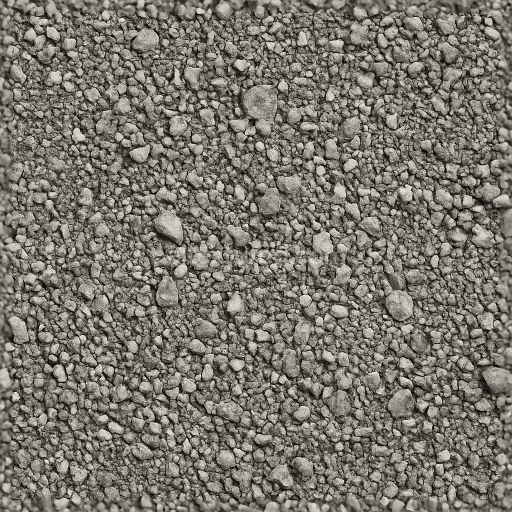This seamless 3D texture in stunning 8K resolution presents a highly detailed and realistic gravel ground composed of mixed gravel fragments interspersed with patches of soft moss all layered atop a rugged rocky soil substrate. The base material primarily consists of mineral-rich sedimentary rock fragments varying in size from fine granular grains to larger irregular pebbles creating an organic and heterogeneous composition. The gravel with moss texture features moderate porosity with naturally occurring crevices and voids between stones that reflect authentic weathering and erosion processes. The moss patches contribute a fibrous soft layer that partially envelops some gravel clusters introducing subtle color variations and tactile contrast against the rough mineral aggregate. This uneven granular surface captures the essence of outdoor environments such as forest floors natural trails and rocky landscapes making it an ideal choice for realistic ground rendering in 3D scenes.
From a materials and compositional perspective the gravel ground is predominantly mineral-based showcasing weathered sedimentary rock with angular to rounded edges typical of natural deposits. The moss introduces an organic component softening the overall texture and enhancing visual complexity through its fibrous structure and vibrant green hues. The underlying rocky soil substrate is compacted and coarse embedded with occasional stones that add depth and structural richness to the surface. The finish is predominantly matte accurately reflecting the natural roughness of the gravel and the soft fibrous quality of the moss. Colorants are naturally derived featuring earthy tones that span muted browns grays and warm reddish highlights in the gravel complemented by lush green pigments in the moss. This varied palette prevents repetition and adds authenticity to the seamless texture.
When mapped to physically based rendering (PBR) channels the BaseColor (Albedo) texture accurately reproduces the earthy and organic color palette of gravel with moss on rocky soil. The Normal map emphasizes both micro and macro surface geometry highlighting the granular stone fragments soft moss patches and uneven soil substrate beneath. The Roughness map reflects the matte non-reflective finish of mineral and organic materials with varied values to differentiate between the harder gravel surfaces and the softer moss areas. The Metallic channel remains close to zero consistent with the non-metallic nature of the natural elements. Ambient Occlusion enhances depth perception by accentuating crevices between gravel stones and the moss coverage while the Height (Displacement) map provides subtle elevation details crucial for parallax occlusion and realistic shadowing in high-quality 3D renders. This texture is fully optimized and ready for seamless integration in Blender Unreal Engine and Unity supporting both offline and real-time rendering workflows.
For practical use it is advisable to carefully adjust the UV scale to maintain realistic grain size relative to your scene’s dimensions ensuring the mixed gravel and moss patches look natural. Fine-tuning the Roughness values can simulate different environmental conditions like wet or dry surfaces enhancing overall realism. Additionally combining the Height and Normal maps can significantly improve depth perception when employing parallax occlusion mapping or tessellation techniques. This seamless 8K resolution PBR 3D texture is an excellent solution for creating detailed authentic outdoor scenes featuring gravel with moss on rocky soil substrates.
How to Use These Seamless PBR Textures in Blender
This guide shows how to connect a full PBR texture set to Principled BSDF in Blender (Cycles or Eevee). Works with any of our seamless textures free download, including PBR PNG materials for Blender / Unreal / Unity.
What’s inside the download
*_albedo.png — Base Color (sRGB)*_normal.png — Normal map (Non-Color)*_roughness.png — Roughness (Non-Color)*_metallic.png — Metallic (Non-Color)*_ao.png — Ambient Occlusion (Non-Color)*_height.png — Height / Displacement (Non-Color)*_ORM.png — Packed map (R=AO, G=Roughness, B=Metallic, Non-Color)

Quick start (Node Wrangler, 30 seconds)
- Enable the addon: Edit → Preferences → Add-ons → Node Wrangler.
- Create a material and select the Principled BSDF node.
- Press Ctrl + Shift + T and select the maps
albedo, normal, roughness, metallic (skip height and ORM for now) → Open.
The addon wires Base Color, Normal (with a Normal Map node), Roughness, and Metallic automatically.
- Add AO and Height using the “Manual wiring” steps below (5 and 6).
Manual wiring (full control)
- Create a material (Material Properties → New) and open the Shader Editor.
- Add an Image Texture node for each map. Set Color Space:
- Albedo → sRGB
- AO, Roughness, Metallic, Normal, Height, ORM → Non-Color
- Connect to Principled BSDF:
albedo → Base Colorroughness → Roughnessmetallic → Metallic (for wood this often stays near 0)normal → Normal Map node (Type: Tangent Space) → Normal of Principled.
If details look “inverted”, enable Invert Y on the Normal Map node.
- Ambient Occlusion (AO):
- Add a MixRGB (or Mix Color) node in mode Multiply.
- Input A =
albedo, Input B = ao, Factor = 1.0.
- Output of Mix → Base Color of Principled (replaces the direct albedo connection).
- Height / Displacement:
Cycles — true displacement
- Material Properties → Settings → Displacement: Displacement and Bump.
- Add a Displacement node: connect
height → Height, set Midlevel = 0.5, Scale = 0.02–0.08 (tune to taste).
- Output of Displacement → Material Output → Displacement.
- Add geometry density (e.g., Subdivision Surface) so displacement has polygons to work with.
Eevee (or lightweight Cycles) — bump only
- Add a Bump node:
height → Height.
- Set Strength = 0.2–0.5, Distance = 0.05–0.1, and connect Normal output to Principled’s Normal.
Using the packed ORM texture (optional)
Instead of separate AO/Roughness/Metallic maps you can use the single *_ORM.png:
- Add one Image Texture (Non-Color) → Separate RGB (or Separate Color).
- R (red) → AO (use it in the Multiply node with albedo as above).
- G (green) → Roughness of Principled.
- B (blue) → Metallic of Principled.
UVs & seamless tiling
- These textures are seamless. If your mesh has no UVs, go to UV Editing → Smart UV Project.
- For scale/repeat, add Texture Coordinate (UV) → Mapping and plug it into all texture nodes.
Increase Mapping → Scale (e.g., 2/2/2) to tile more densely.
Recommended starter values
- Normal Map Strength: 0.5–1.0
- Bump Strength: ~0.3
- Displacement Scale (Cycles): ~0.03
Common pitfalls
- Wrong Color Space (normals/roughness/etc. must be Non-Color).
- “Inverted” details → enable Invert Y on the Normal Map node.
- Over-strong relief → lower Displacement Scale or Bump Strength.
Example: Download Wood Textures and instantly apply parquet or rustic planks inside Blender for architectural visualization.
To add the downloaded texture, go to Add — Texture — Image Texture.

Add a node and click the Open button.

Select the required texture on your hard drive and connect Color to Base Color.







